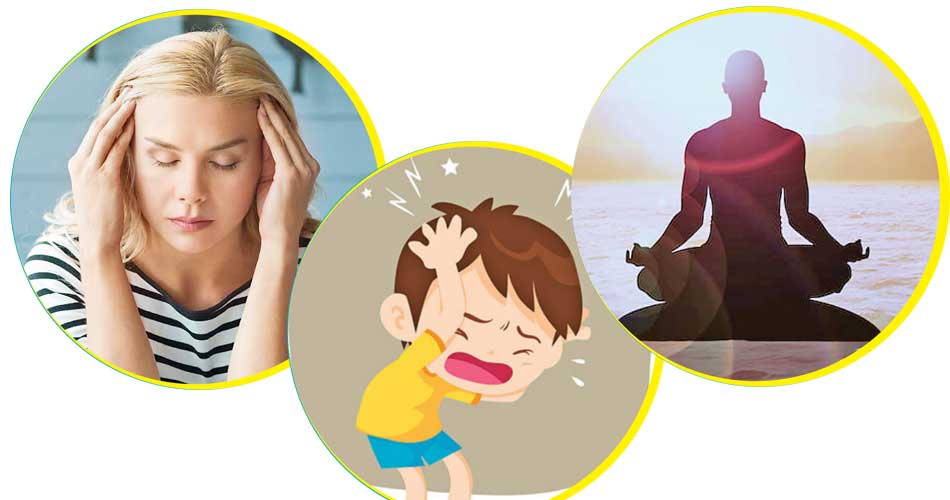Salt therapy – All you need to know
- 24 Feb - 01 Mar, 2024
Just about everyone has headaches, but a migraine is not just a bad headache. A migraine headache is a complex condition of the nervous system. It is often described as an intense pulsing or throbbing pain that usually occurs in one area of the head. Migraine attacks may cause severe, debilitating pain for hours to days, necessitating the need to retreat to a dark, quiet place. A migraine headache is often accompanied by additional symptoms, such as nausea, vomiting, and sensitivity to light and sound.

Understanding your individual phases of migraine can be an essential cornerstone in finding the right treatment option.
Also known as “preheadache” or the premonitory phase, prodrome can mark the beginning of a migraine attack. This phase can last several hours or may even occur over several days.
Up to one-third of people with migraine experience aura as a distinct phase in the progression of their migraine attack. Like other phases, aura doesn’t necessarily occur during every migraine attack in those who experience them. People experiencing aura might endure periods of blurry vision or vision loss, or the appearance of geometric patterns, flashing or shimmering lights, or blind spots in one or both eyes. These symptoms usually gradually evolve over at least five minutes and can last for up to 60 minutes.
The headache phase of a migraine attack is characterised by pain on one or both sides of the head. This phase typically lasts from several hours to up to three days. Headache phase pain can vary from person to person and from incident to incident, with some migraine attacks causing mild pain, while others are debilitating.
Postdrome, also called the “migraine hangover,” typically occurs after the end of the headache phase. Like prodrome and aura, not every person with migraine suffers from postdrome, but it does occur in most (approximately 80 per cent). For those that do, postdrome may not follow every migraine attack they experience, and the length of this phase can vary. Postdrome can be just as debilitating as headache, according to some people with migraine. Symptoms of postdrome include fatigue, body aches, trouble concentrating, dizziness and sensitivity to light.
Migraines cause pain as real as the pain of injuries — with one difference: Healthy habits and simple nonmedical remedies sometimes stop migraines before they start.
Many people with migraines report sensitivity to light and sound. Make your bedroom dark and quiet, and you may be able to sleep. Not all headaches respond to sleep, but the chemicals released in your brain during sleep may help ease your pain. Also, if you’re sensitive to sounds, blocking them out could help.
Place the compress across your forehead or the back of your neck. Ice can have a numbing effect. It detracts the brain from the migraine. You’re stimulating other nerve endings where you’re putting the compress. Some people may prefer a warm compress. Heat can help relax tense muscles. You may also try taking a warm bath or shower.
Take time to sit and be in the moment. Concentrate on your breathing. This type of mindful meditation can sometimes ease physical pain. According to researches, mindfulness may produce effects comparable to medication alone in people with chronic migraine and medication overuse. Like other home remedies, mindfulness is a distraction that can help ease pain.
The scent of lavender may help you relax. You can sip some lavender tea, or inhale lavender essential oil, which is available in pharmacies and health food stores. According to a study, the people who inhaled lavender essential oil for 15 minutes reported greater reduction of headache severity than those who did not.
Dehydration is often a migraine trigger, and replenishing fluids can restore your body’s balance of water and electrolytes. Have trouble drinking enough water? Try this trick: Add a slice of lemon or lime to make your water taste better so you may drink more. And limit caffeine, which can be dehydrating in large amounts.
Massage can help your muscles relax. Yet whether this helps you is a personal preference. Some people experiencing a migraine may be extremely sensitive to touch, and a massage can make them feel worse. Others find that rubbing their temples stimulates circulation and helps them to relax.
When used together with medication, these home remedies work for many people. If they don’t ease your pain, however, you may consider talking to your doctor about a change in medication.
COMMENTS